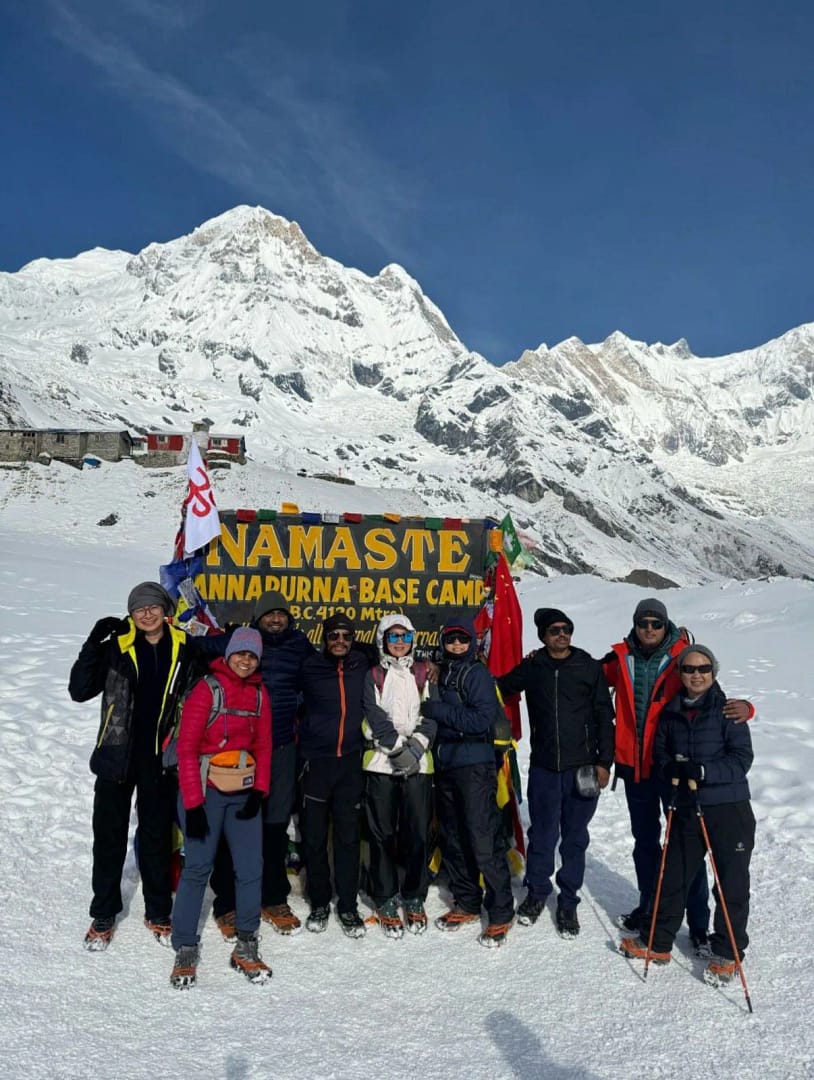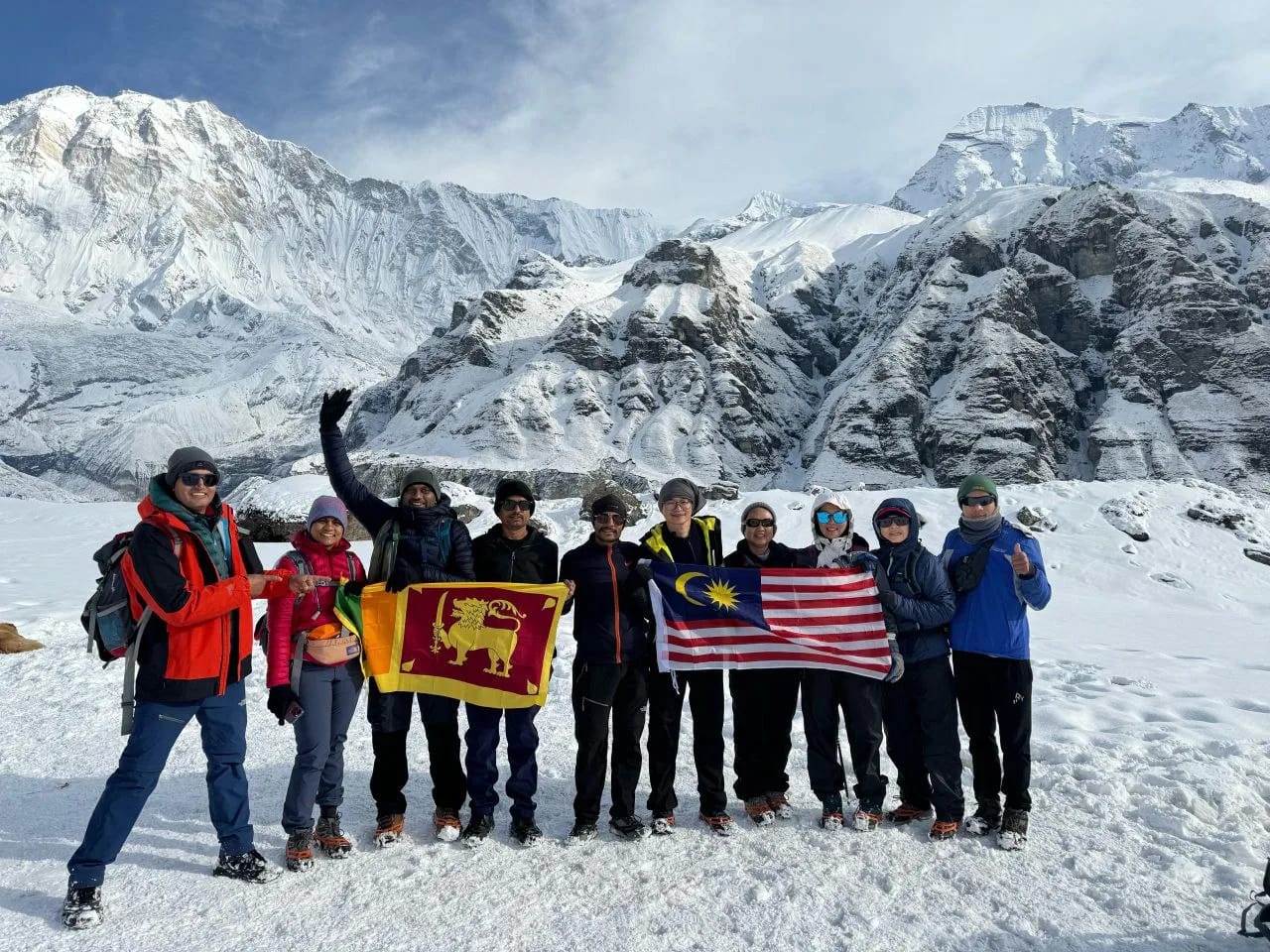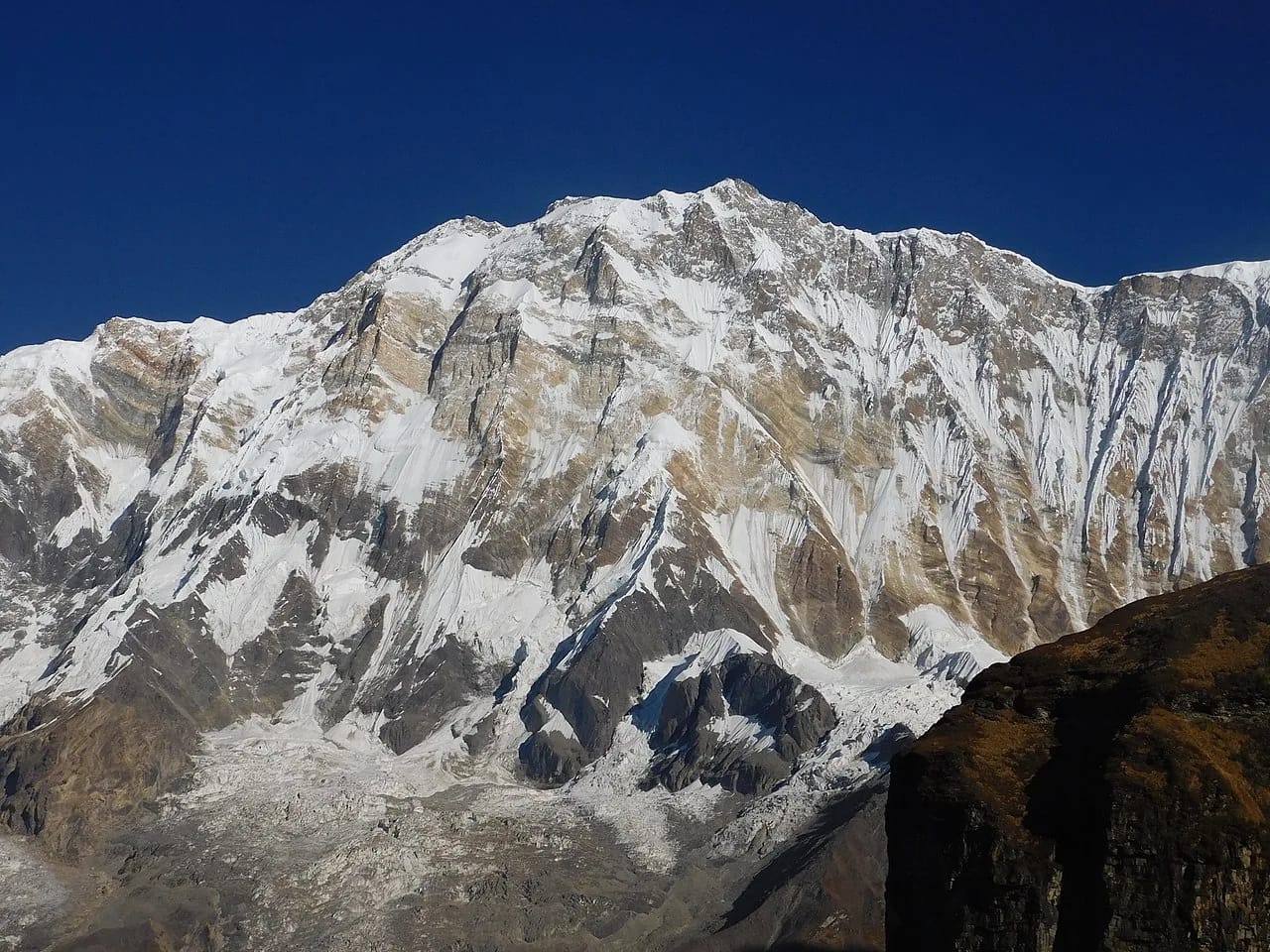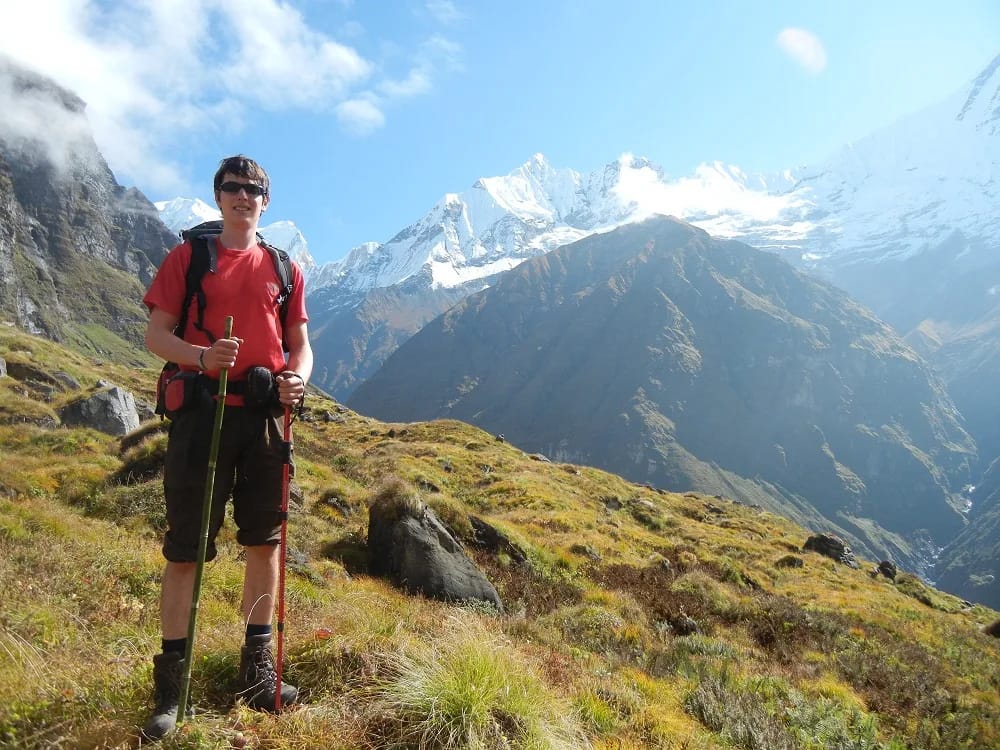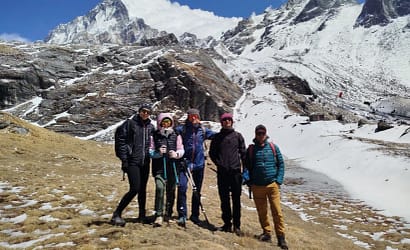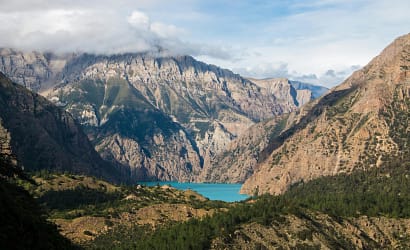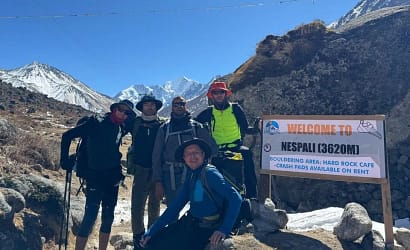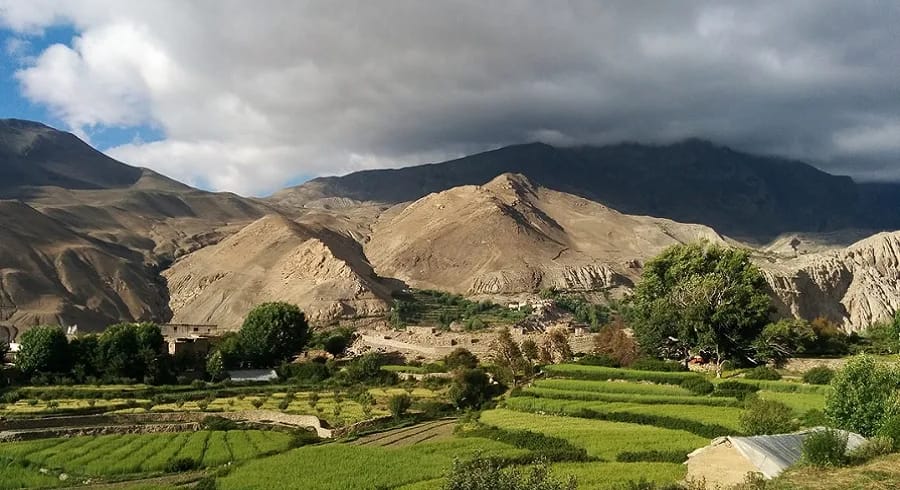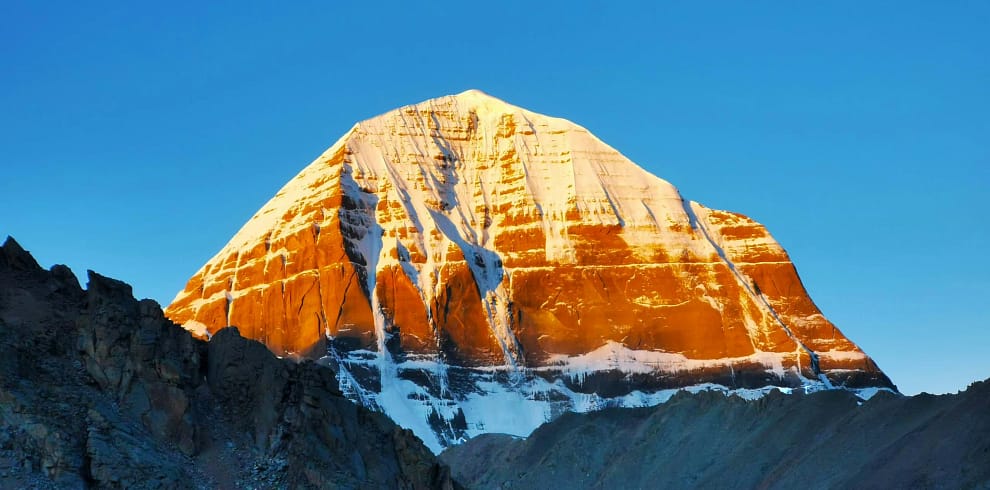The Annapurna Base Camp Trek offers a fulfilling, relaxing experience in the heart of the stunning Annapurna Himalayas. This hike through terraced farmland, rhododendron woods, and charming Gurung and Magar villages offers captivating, smaller scenic experiences.
These villages highlight the hospitable people, offering travelers a chance to learn about the cultures woven throughout the Himalayas. The trail traverses the fascinating Modi Khola valley, passing through key stops like Chhomrong and Bamboo. It culminates at Machhapuchhre Base Camp, standing at 4,130m.
The final ascent to the sacred Uchchelo of Annapurna offers breathtaking panoramic views of several majestic peaks. These include Annapurna I (8,091m), Machhapuchhre (6,993m), Hiunchuli (6,441m), and many more uplifts. Trekking through this mountain and watching the sunrise over the snow-covered peaks is an extraordinary sight. It’s an unforgettable experience for any trekker.
They consider it one of the best trekking routes for all levels.Consequently, they keep it challenging. Moreover, teahouses will provide lodging and offer basic yet adequate and delicious meals. In addition, the clearing of the skies during the autumn and spring seasons creates a physiologically conducive environment for the safe completion of the trek. Furthermore, the favorable weather conditions enhance the trekking experience, ensuring optimal visibility and comfort. As a result, trekkers can fully enjoy the journey while feeling safe and well-prepared. Additionally, the trek offers a perfect balance of challenge and reward, making it an unforgettable adventure.
From this trail, both beginner and expert adventurers can catch glimpses of splendid views from every landscape. It allowing them to form a deep and intimate bond with nature. It is at Blaze Mountain that you can come for a safe and highly organized trek and run to the Annapurna Base Camp!
What makes the Annapurna Base Camp Trek special?

The Annapurna Base Camp Trek is one of those trips that get etched in your memory for a combination of breathtakingly beautiful landscapes, very vibrant culture, and exciting challenges. The trekkers pass through a vast variety of Nepal’s landscapes, from terracing fields to high-altitude glacier basins, further to lush rhododendron woods. It also leads into the Annapurna Sanctuary with a base camp surrounded by snow-capped peaks like Annapurna I, Machhapuchhre, and Hiunchuli.
Trekkers also spend time in Gurung and Magar villages, where they get welcomed with warmth, eat traditional food, and engage in lively cultural activities. After exhausting hiking days, Jhinu Danda’s natural hot springs offer a peaceful escape. With spring’s blossoming flowers and autumn’s magnificent mountain scenery, seasonal changes also offer a certain charm.
Even with its difficulties, the trip is, however, achievable and worthwhile for hikers of all skill levels. However, reaching 4,130 meters at Annapurna Base Camp, which provides expansive views of the majestic Himalayan mountains, feels extremely satisfying. In the end, the Annapurna Base Camp Trek is one of Nepal’s most unique trekking experiences, as it strikes the ideal balance between adventure, nature, and cultural discovery.
Additional Information:
You can access full details regarding the Annapurna Base Camp from our website. If you need any extra information or extra support, feel free to contact Blaze Mountain Adventure. To meet our agent, please follow the link, and/or if you want to talk to us directly, you can call our office at 01-4522505.
The Annapurna Base Camp trek is one of the most popular trekking routes in the Annapurna region. Also known as the Annapurna Sanctuary Trek, it provides you with the breathtaking views of mountain ranges as well as the thrill of narrow gorges. The combination of nature, adventure, and culture is what you can expect from the Annapurna base camp trek.
The starting point for the Annapurna base camp trek is Pokhara. The trek goes through the Annapurna base camp (4230 m), Poon Hill (3210 m), the Modi River, and the brightly illuminating rhododendron and bamboo forests. During the trek, you can have a look at spectacular mountains and simple yet fascinating settlements of the ethnic Gurung community. You can also have the experience of wild honey hunting in Chumrung if your trek is during the honey hunting season. You will surely experience the majestic views of the Annapurna mountain range as well as Machhapuchhre, giving you the feeling of paradise on earth at the base camp.
Blaze Mountain provides a range of trekking services for the Annapurna base camp trek. There is the availability of hotels and teahouses at major points waiting to serve you. To additionally facilitate tourists, Blaze Mountain Adventure can arrange camping services if you want to have a camping experience. Also, the itinerary for the trek to the Annapurna base camp can be adjusted according to your needs and comfort.
Best Season for Annapurna Base Camp Trek
You can hit the ABC trail anytime if you’re really up for it. But let’s not pretend like every month feels the same up there. Each season gives its own energy sometimes the path welcomes you with bright skies and blooming flowers; other times it hits you with thick fog and cold winds straight to your bones. So if you’re planning this properly, this is how it actually feels out there.
Spring (March to May)
Now this one? This is where it feels like the whole mountain is waking up after a long sleep. The air gets warmer, the trail turns soft and colorful, and you’re literally walking through blooming rhododendron forests. It doesn’t feel rushed either the days are long, the sun stays with you, and the skies stay open. Mornings are crisp but not painful. By midday, you’re in a T-shirt, soaking in those clean views of Annapurna and Machapuchare like you earned it. You feel alive. That’s what spring does. If you want beauty and comfort together, this is your season.
Monsoon (June to August)
This one’s for the bold. For people who like the raw stuff. Monsoon doesn’t care about your photos or your comfort. It throws rain, mud, leeches, and fog at you like it’s testing if you really wanted this trek or just the Instagram shot. Most of the time, you’re walking through thick green jungle and clouds. The views? Rare, but when they do show up, they hit different. There’s barely anyone else on the trail. It’s just you, the rain, and the sound of rivers getting wild. It’s moody and intense if you like walking in the rain and don’t mind a little mess, this one’s got soul.
Autumn (September to November)
If you’re looking for the most balanced experience this is it. Everything just clicks in autumn. The rain’s gone, the clouds clear out, and the views feel like they’ve been waiting just for you. The sky turns deep blue, the mountain peaks glow early in the morning, and the air is fresh like it just got reset. You’ll meet trekkers from everywhere. It’s not crowded in a bad way it’s alive. Everyone’s in a good mood, and the tea houses feel like little community spots. The trail feels smooth, the weather behaves, and every day feels like the right decision.
Winter (December to February)
This one’s cold, no sugarcoating that. The wind stings your face, your fingers feel stiff in the early hours, and teahouses up high might be half-closed. But the silence? The peace? Unreal. You get these insane views of snow-covered peaks with no one around. Just you and the trail. The skies stay clear most of the time, and the air is dry and clean. It’s like the mountain’s sleeping but still watching you. If you’re someone who enjoys that quiet kind of intensity and you’re not scared of freezing mornings, winter will treat you in its own beautiful way.
Food and Accommodation on the Annapurna Base Camp Trek
Let’s talk real. You’re not trekking through the Himalayas with five-star hotel rooms and buffet breakfasts. But what you do get is solid simple food that hits the spot after a long day and warm beds in places that feel like home in the middle of nowhere. It’s not luxury, but it’s enough. And when you’re sitting by the stove with a hot plate in your hand, tired but proud trust me, it feels more than enough.
Here’s how food and stay really go on this trail.
Food on the Trail
You eat well. Not fancy, but filling and fresh. Most of the food is locally cooked, so don’t expect anything super fast—but that’s part of the vibe. Sit down, rest your legs, and wait for something warm to arrive. It’s all you need up there.
What you’ll usually find:
- Dal Bhat (the king of trekking meals you’ll probably eat this daily and love it every time)
- Veg and non-veg fried rice
- Noodles (veg, egg, chickenpends on on the place)
- Pasta, mein, macaroni
- Soup (garlic soup is the go-to up here)
- Tibetan bread, pancakes, and toast for breakfast
- Tea, coffee, hot lemon, and sometimes even hot chocolate
Everything is carb-heavy and energy-boosting exactly what your body needs after hours of walking. Meat is available in some places, but it’s better to avoid it higher up. It’s not always fresh the higher you go.
Accommodation along the Route
You’ll be staying in what we call tea houses local lodges built and run by families who live in the region. They’re simple, quiet, and cozy when you need them most. Don’t expect big rooms or heated showers, but they’re clean and get the job done.
Here’s what most places offer:
- Twin-sharing rooms with basic beds and blankets
- Common dining hall with a central stove (this is where everyone gathers)
- Shared bathrooms (attached toilet in a few upgraded places, but not always)
- Solar- or gas-heated showers (extra charge for hot water in many spots)
- Charging ports for your devices (some places charge extra for this)
The higher you go, the more basic it gets. But that’s just part of trekking life. You’ll start missing the thin mattress and warm soup once you’re back home.
Health and Safety on the Annapurna Base Camp Trek
The Annapurna trail looks calm from afar, but the mountains don’t play around. You’ll be climbing high, walking long days, and dealing with weather that can flip in minutes. Altitude is the real challenge after 3,000 meters your body feels different. Don’t rush it. Walk slowly, drink water all the time, and rest when your body says so. If headaches, dizziness, or nausea hit, don’t act tough go down and take a break. Diamox can help, but only if you know what you’re doing. Staying hydrated and eating well is more important than you think. Drink at least three to four liters of clean water daily and eat solid meals like dal bhat or noodles. Keep snacks like energy bars or dry fruit handy to keep your energy up between stops.
Packing right makes all the difference because mountain weather changes fast. Layer your clothes so you can handle sun, cold, rain, or wind without scrambling. Good trekking boots are a must, plus gloves, a warm hat, and a proper sleeping bag for the cold nights. Stay sharp on the trail use trekking poles to save your knees and watch your footing, especially on narrow paths and river crossings. Let yaks and porters pass safely, and don’t take risks near edges. Be ready for anything. Carry a small first-aid kit, keep your phone charged with a local SIM, and have travel insurance that covers helicopter rescue. Always tell your guide if you feel off early warning keeps you safe and your trek on track.
Travel Tips for Annapurna Base Camp Trek
Before you start the trek, pack smart and keep it light. Every extra kilo is a pain when you’re walking for days. Bring layers you can easily take off or put on because the weather changes fast in the mountains. And don’t show up with new boots break them in before, or your feet will pay for it.
Drink water all day, even when you don’t feel thirsty. Eat enough too, because your body burns way more energy than you think. Listen to your body. If you feel off, slow down. Take your time on steep climbs, and don’t skip acclimatization days your lungs need to catch up.
Respect the people and their culture. A simple “Namaste” opens more doors than you expect. Carry cash since ATMs and card machines are rare up the trail. And always have a small first aid kit ready. Keep your phone charged with a local SIM you want to be able to call if things go sideways.
Seasonal Temperature and Weather Guide for Annapurna Base Camp Trek
| Season | Day Temperature (°C) | Night Temperature (°C) | Notes |
|---|---|---|---|
| Spring | 12 to 20 | 2 to 8 | Warm days, cool nights, best overall trekking season |
| Summer | 15 to 22 | 7 to 12 | Warm but rainy, slippery trails, fewer trekkers |
| Autumn | 10 to 18 | 0 to 6 | Warm days, cool nights, and the best overall trekking season |
| Winter | 2 to 10 | -10 to -2 | Cold days and very cold nights, fewer crowds, snow at higher altitudes |
Things We Can Do on the Annapurna Base Camp Trek
This trek isn’t just about walking long days. It’s about what you see and feel on the way. The mountains don’t look real sometimes. The views hit hard. You’ll stop in small villages, meet locals, hear their stories, and see how they live high up here.
You can visit old monasteries, catch the sunrise lighting up Annapurna and Machapuchare, and relax in natural hot springs to soothe your tired muscles. You’ll eat local food momos, dal bhat in tea houses that feel like home after a long day.
There are plenty of moments to just stop and breathe. Walk through rhododendron forests, cross suspension bridges over rushing rivers, or sit quietly and soak in the peace. Every step gives you something new a view, a challenge, or a memory you won’t forget.
Why Trek with Blaze Mountain
Trekking Annapurna Base Camp is a big deal. Doing it right changes everything. When you go with Blaze Mountain, you’re not just another tourist. We’re people who know these mountains inside out. No fancy promises. Just real support, good gear, and a team that treats you like family.
Our guides are local. They grew up here. They know every twist and turn on the trail. They keep you safe and comfortable and show you the best spots away from the crowds. We take care of all the tricky stuff — permits, places to stay, meals — so you don’t have to stress.
We believe trekking isn’t just ticking off a list. It’s about connecting with the mountain, the culture, and yourself. With Blaze Mountain, you get that real, raw, unforgettable experience.
Itinerary
Upon your arrival in Kathmandu, the capital of Nepal, the trek guide waits for your arrival at the airport. Afterwards, preparation for the hike with the sound of music and rhythm that this beautiful city offers shall keep you busy during the remaining daylight hours.
Kathmandu to Pokhara by Tourist Bus: It takes around 6-7 hours via the beauties alongside the rivers, hills, and rural settlements. Reach Pokhara town and spend the day relaxing, getting ready for the trek.
After a 1.5–2 hour drive from Pokhara to Nayapul, it takes 4-5 hours to walk to Ulleri. The hike progressively climbs through woodlands and lovely terraced farms.
Trek (6-7 hours) from Ulleri to Chhomrong. The trek provides breathtaking views of Machapuchhre and Annapurna South as it winds its way up and down through tiny settlements and lush woods.
Trek for four to five hours from Chhomrong to Bamboo. The path offers serene views of the surrounding mountains as it passes through lush forests and bamboo gardens.
Trek for four to five hours from Bamboo to Annapurna Base Camp. Reach the base camp by climbing through breathtaking scenery, where you will be surrounded by magnificent peaks like as Hiunchuli, Machapuchhre, and Annapurna I.
Descend from Annapurna Base Camp to Bamboo (6-7 hours). Retrace your steps through lush valleys and forests.
Trek from Bamboo to Jhinu Danda (6-7 hours), known for its natural hot springs. Enjoy a relaxing soak in the hot springs to soothe your muscles after the trek.
Trek from Jhinu Danda to Nayapul (3-4 hours). From Nayapul, drive back to Pokhara (1.5-2 hours). Spend your last evening in Pokhara, enjoying the peaceful ambiance of the lakeside.
Take a bus or flight back to Kathmandu. After arrival, enjoy some final sightseeing or shopping before your departure.

